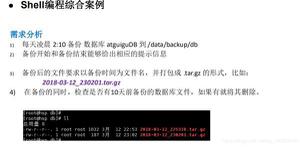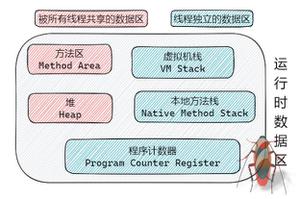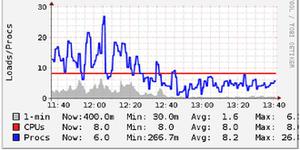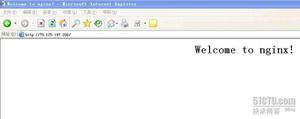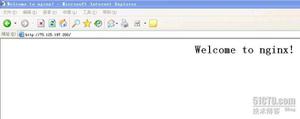Java反射之Call stack introspection详解
java是基于栈设计的语言,其实与C、C++语言相同。整个程序的运行表现在方法的执行是一系列入栈出栈的行为,栈是线程私有的。
在java语言中,我们可以跟踪方法的调用关系,即当前栈帧(栈顶)和已经入栈的栈帧的层次关系。
从java1.4以后,java语言的Throwable类提供了以下方法:
OpenDeclarationStackTraceElement[]java.lang.Throwable.getStackTrace()
ProvidesprogrammaticaccesstothestacktraceinformationprintedbyprintStackTrace().Returnsanarrayofstacktraceelements,eachrepresentingonestackframe.Thezerothelementofthearray(assumingthearray'slengthisnon-zero)representsthetopofthestack,whichisthelastmethodinvocationinthesequence.Typically,thisisthepointatwhichthisthrowablewascreatedandthrown.Thelastelementofthearray(assumingthearray'slengthisnon-zero)representsthebottomofthestack,whichisthefirstmethodinvocationinthesequence.
Somevirtualmachinesmay,undersomecircumstances,omitoneormorestackframesfromthestacktrace.Intheextremecase,avirtualmachinethathasnostacktraceinformationconcerningthisthrowableispermittedtoreturnazero-lengtharrayfromthismethod.Generallyspeaking,thearrayreturnedbythismethodwillcontainoneelementforeveryframethatwouldbeprintedbyprintStackTrace.Writestothereturnedarraydonotaffectfuturecallstothismethod.
Returns:
anarrayofstacktraceelementsrepresentingthestacktracepertainingtothisthrowable.
Since:
1.4
该方法返回的StackTraceElement[] 就是栈帧数组。数组下标0的元素代表当前栈顶栈帧,数组的最大下标代表调用栈序列中第一个栈帧,也就是第一个方法的调用。我们可以从StackTraceElement得到栈调用层级的关系、调用方法名及调用入口位置,代码示例:

执行结果:

调用结果显示的方法调用层级关系。
那我们得到这些信息有什么用呢。
1.日志:这些信息可以让应用的日志系统得到信息更详细。
2.安全:API可以决定调用者当前包或者类是否有权限进入。
3.流程控制:可以避免一些流程错误,比如无限递归调用。
实现一个简单的日志系统:
package com.doctor.reflect;
import java.io.PrintWriter;
import java.io.StringWriter;
/**
* Call stack introspection
*
* @author sdcuike
*
* Created At 2016年8月29日 下午9:40:35
*/
public class CallStackIntrospectionDemo {
private static final MyLogger logger = new LoggerImpl();
public static void main(String[] args) {
logger.logRecord("hello");
IllegalArgumentException exception = new IllegalArgumentException("IllegalArgumentException");
logger.logProblem("throwable", exception);
}
public interface MyLogger {
// Types for log records
int ERROR = 0;
int WARNING = 100;
int STATUS = 200;
int DEBUG = 300;
int TRACE = 400;
void logRecord(String message);
void logProblem(String message, Throwable throwable);
}
public static class LoggerImpl implements MyLogger {
@Override
public void logRecord(String message) {
Throwable throwable = new Throwable();
log(message, throwable.getStackTrace()[1]);
}
@Override
public void logProblem(String message, Throwable throwable) {
StringWriter out = new StringWriter();
PrintWriter writer = new PrintWriter(out);
throwable.printStackTrace(writer);
writer.flush();
log(message + out.toString(), throwable.getStackTrace()[0]);
}
private void log(String message, StackTraceElement stackTraceElement) {
String className = stackTraceElement.getClassName();
String methodName = stackTraceElement.getMethodName();
int lineNumber = stackTraceElement.getLineNumber();
System.out.println(String.join(" ", "模拟打印日志:", methodName, className, "" + lineNumber, message));
}
}
}
执行结果:
模拟打印日志: main com.doctor.reflect.CallStackIntrospectionDemo 36 hello
模拟打印日志: main com.doctor.reflect.CallStackIntrospectionDemo 38 throwablejava.lang.IllegalArgumentException: IllegalArgumentException
at com.doctor.reflect.CallStackIntrospectionDemo.main(CallStackIntrospectionDemo.java:38)
上述日志,只是简单的在控制台打印一些信息。
总结
以上就是本文关于Java反射之Call stack introspection详解的全部内容,希望对大家有所帮助。感兴趣的朋友可以继续参阅本站:
Java反射简易教程
关于Java反射机制 你需要知道的事情
Java的RTTI和反射机制代码分析
如有不足之处,欢迎留言指出。
以上是 Java反射之Call stack introspection详解 的全部内容, 来源链接: utcz.com/p/214979.html

